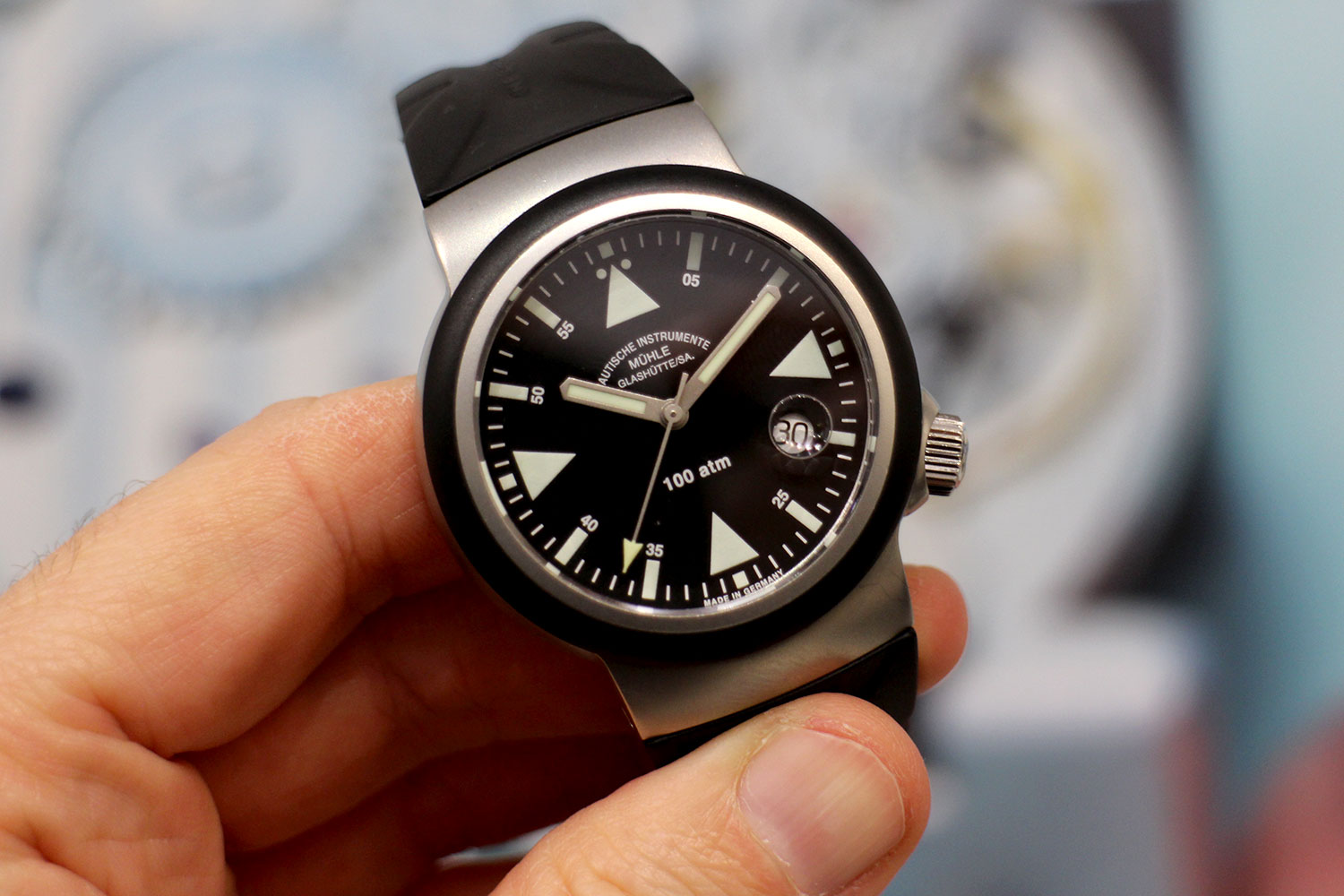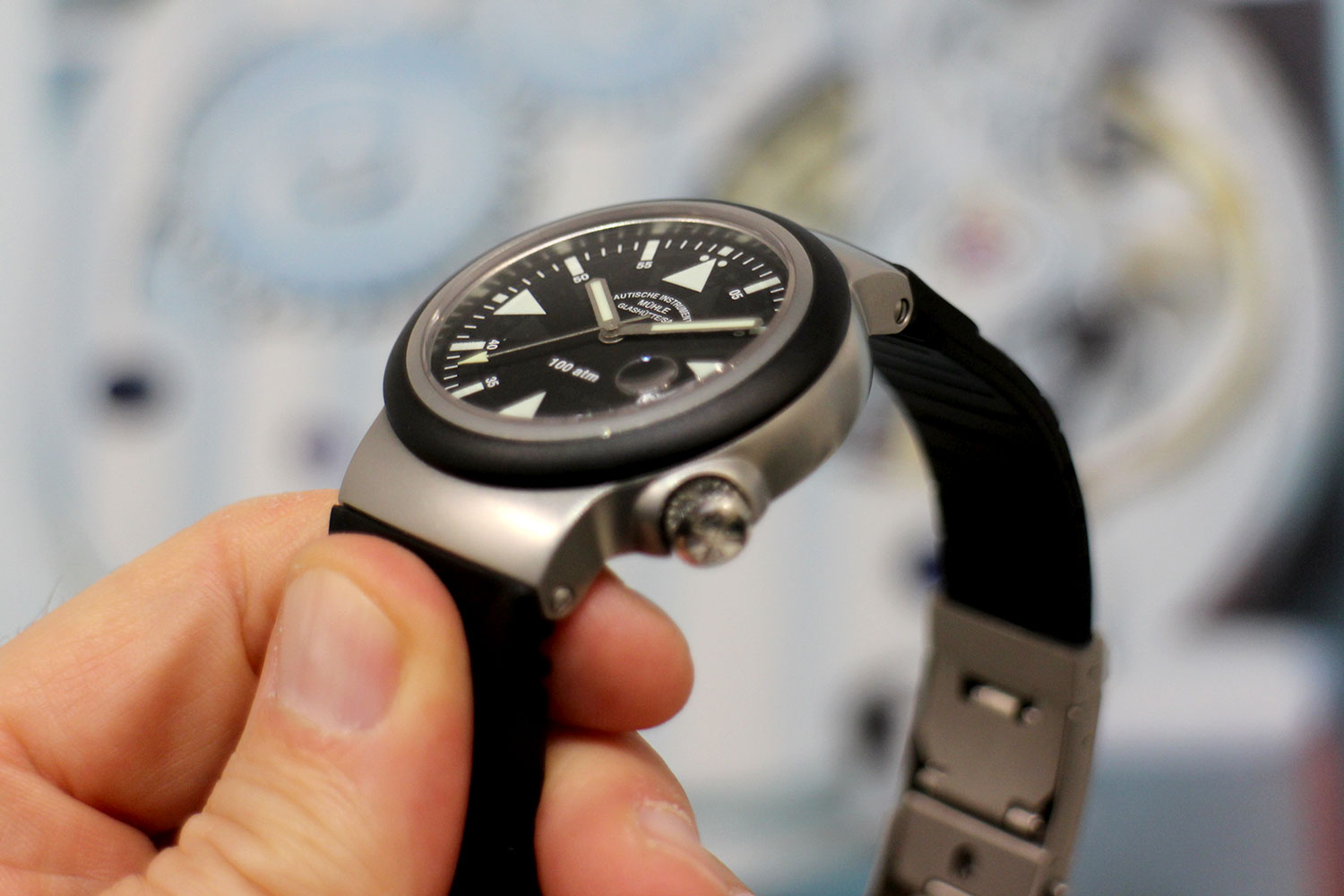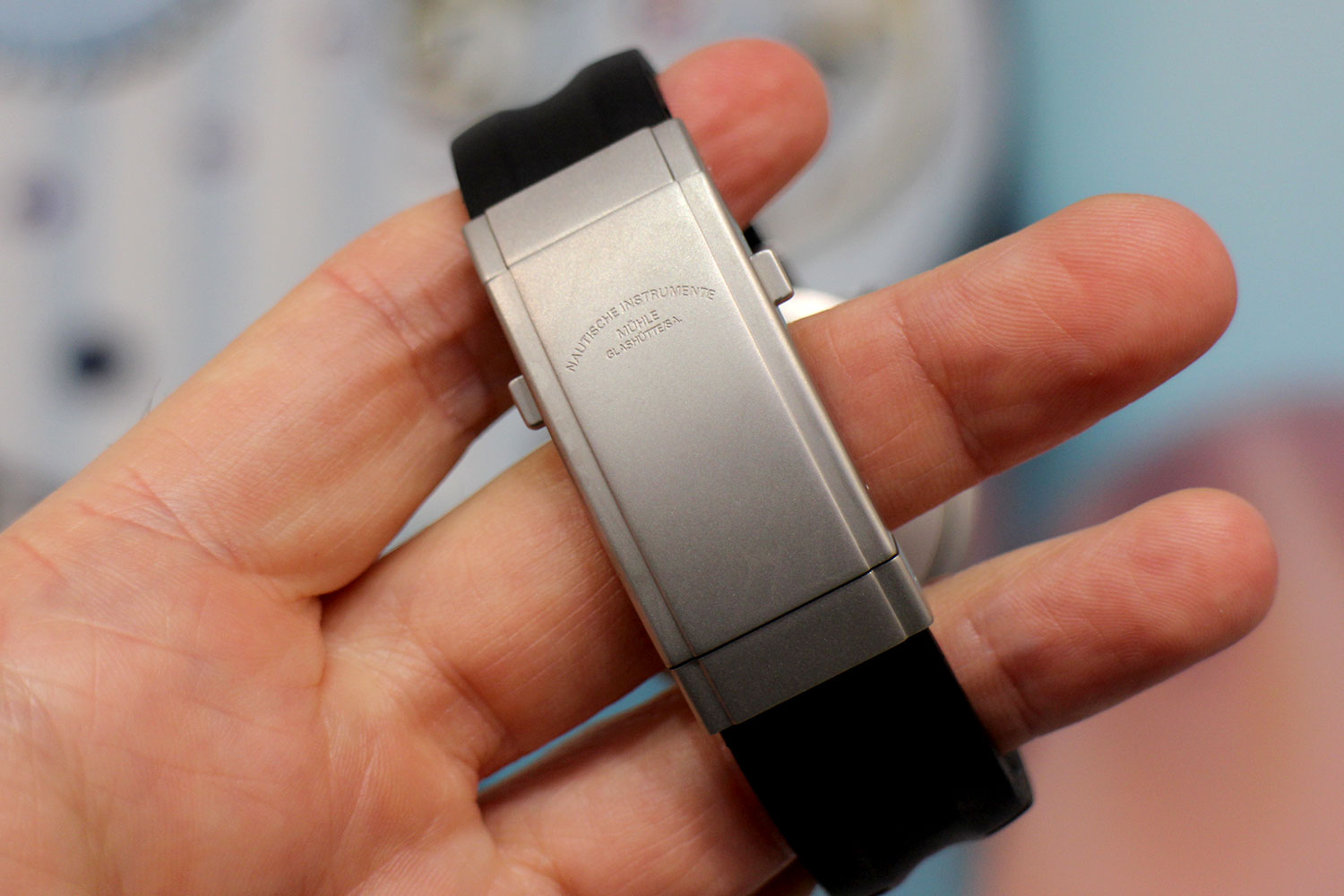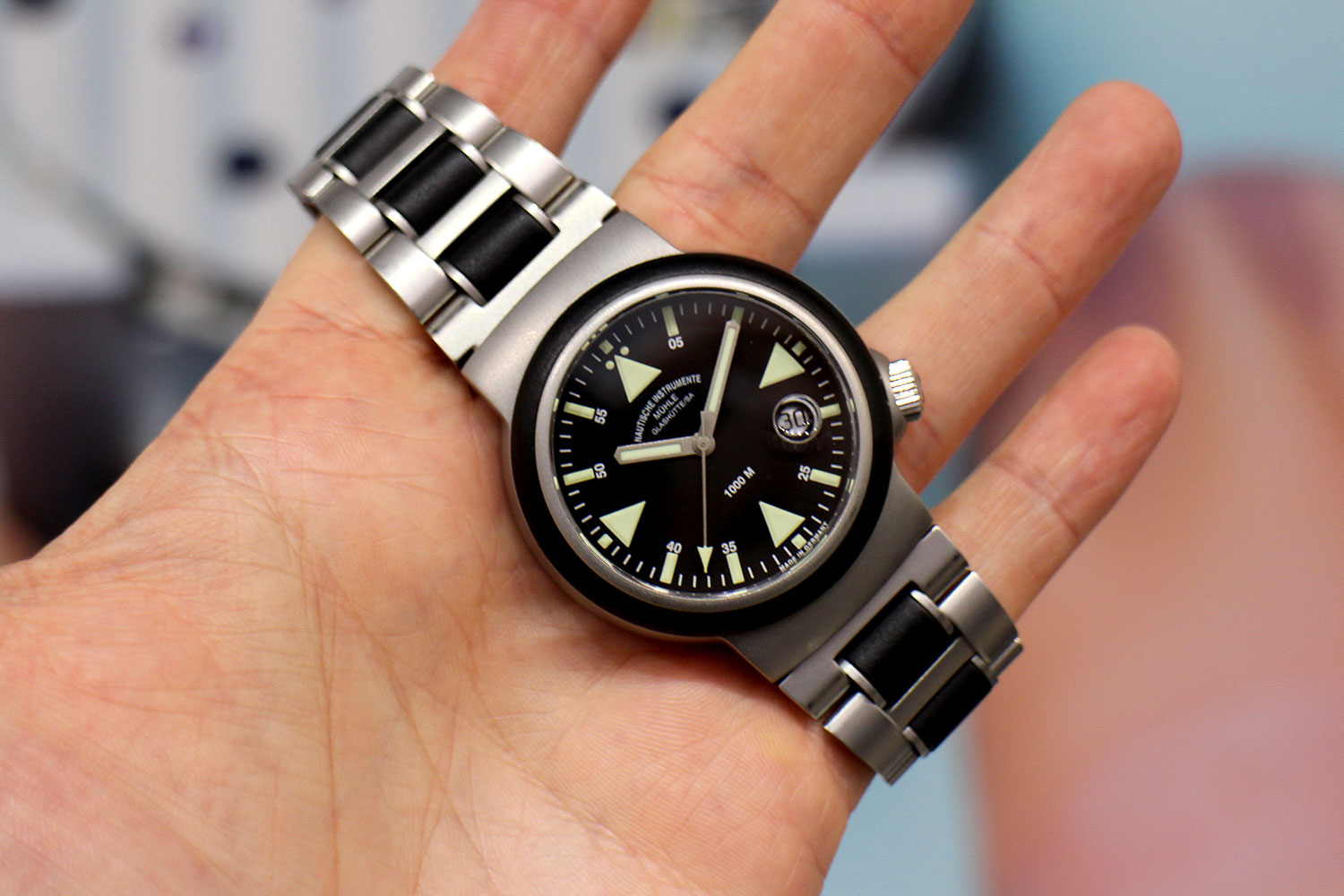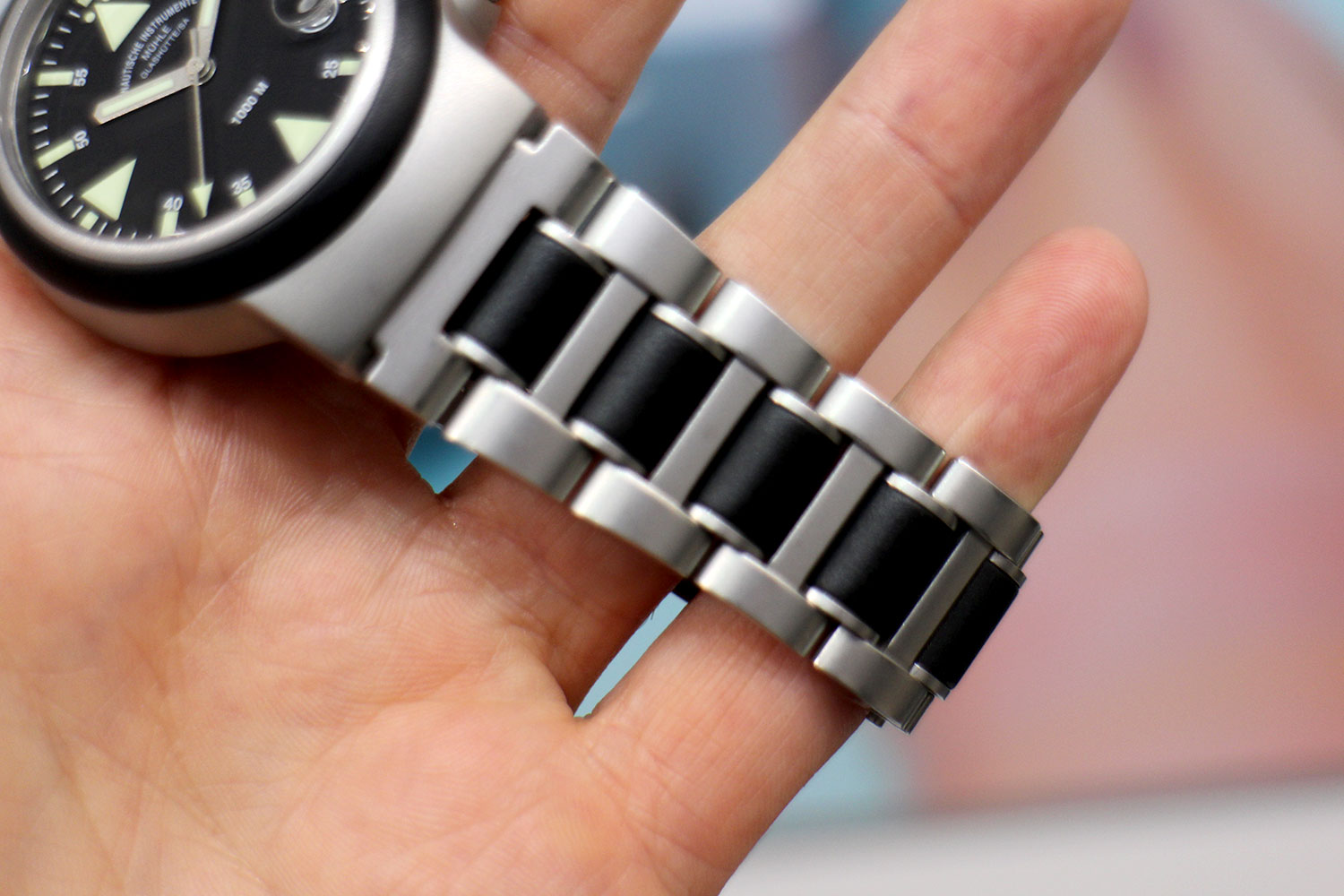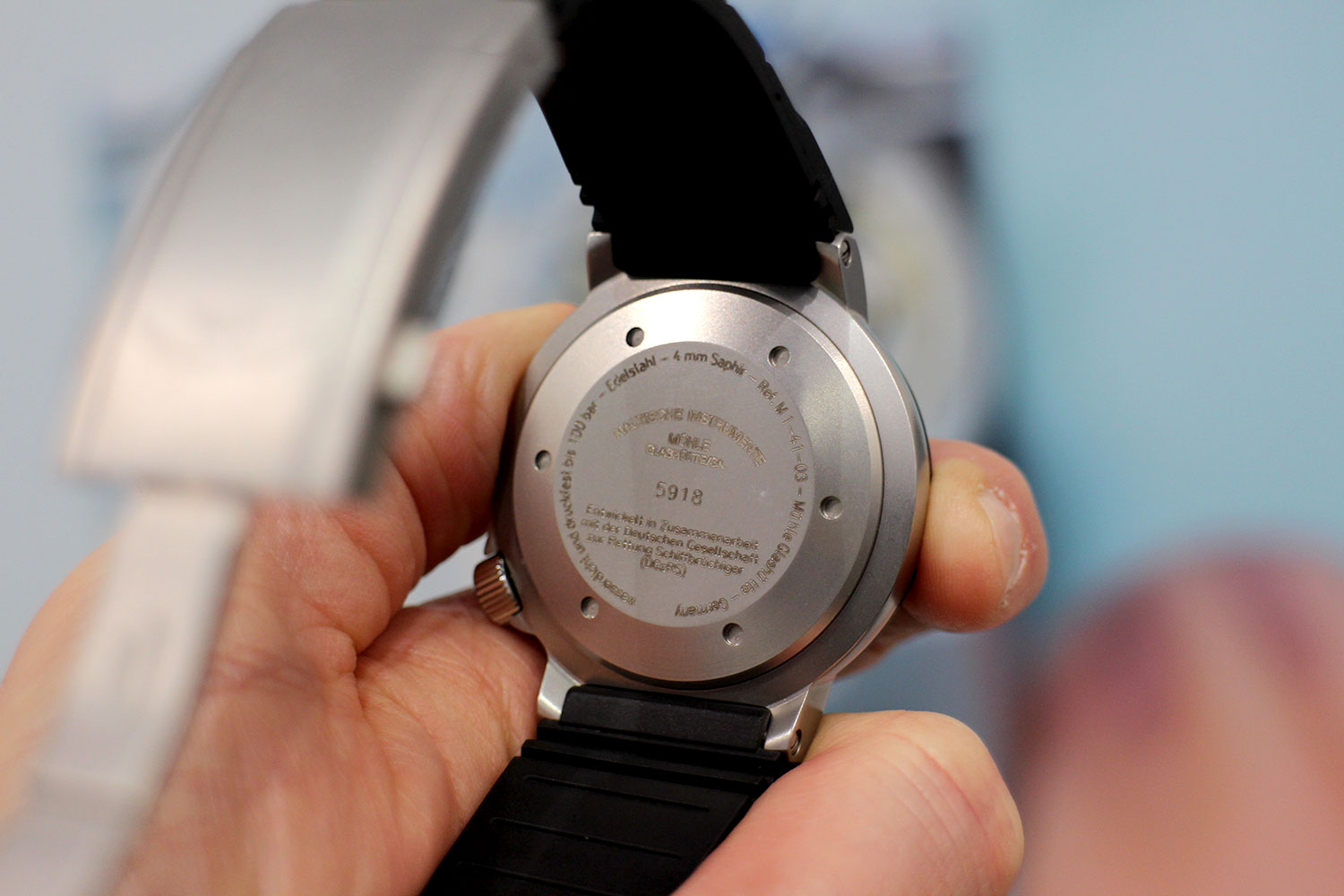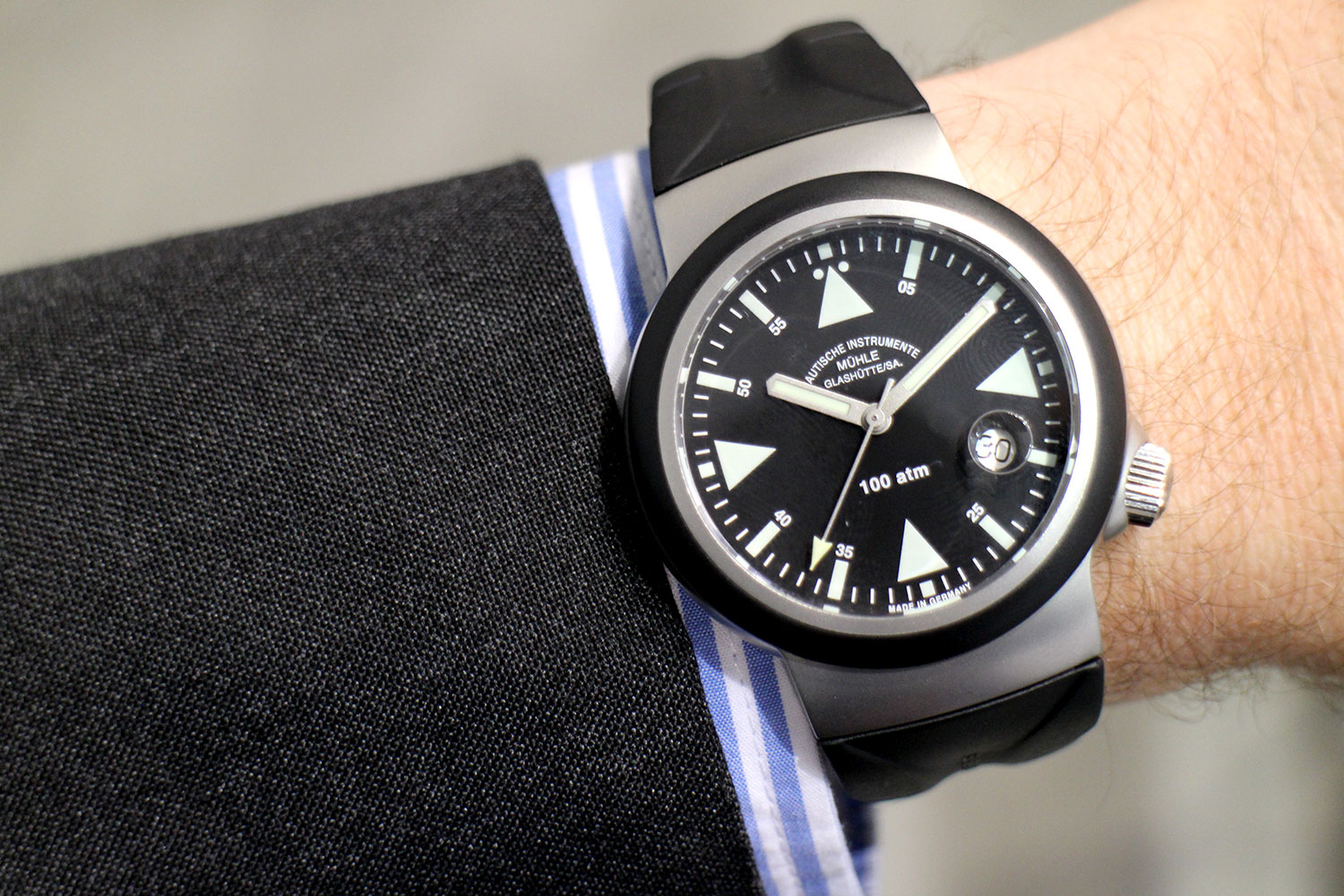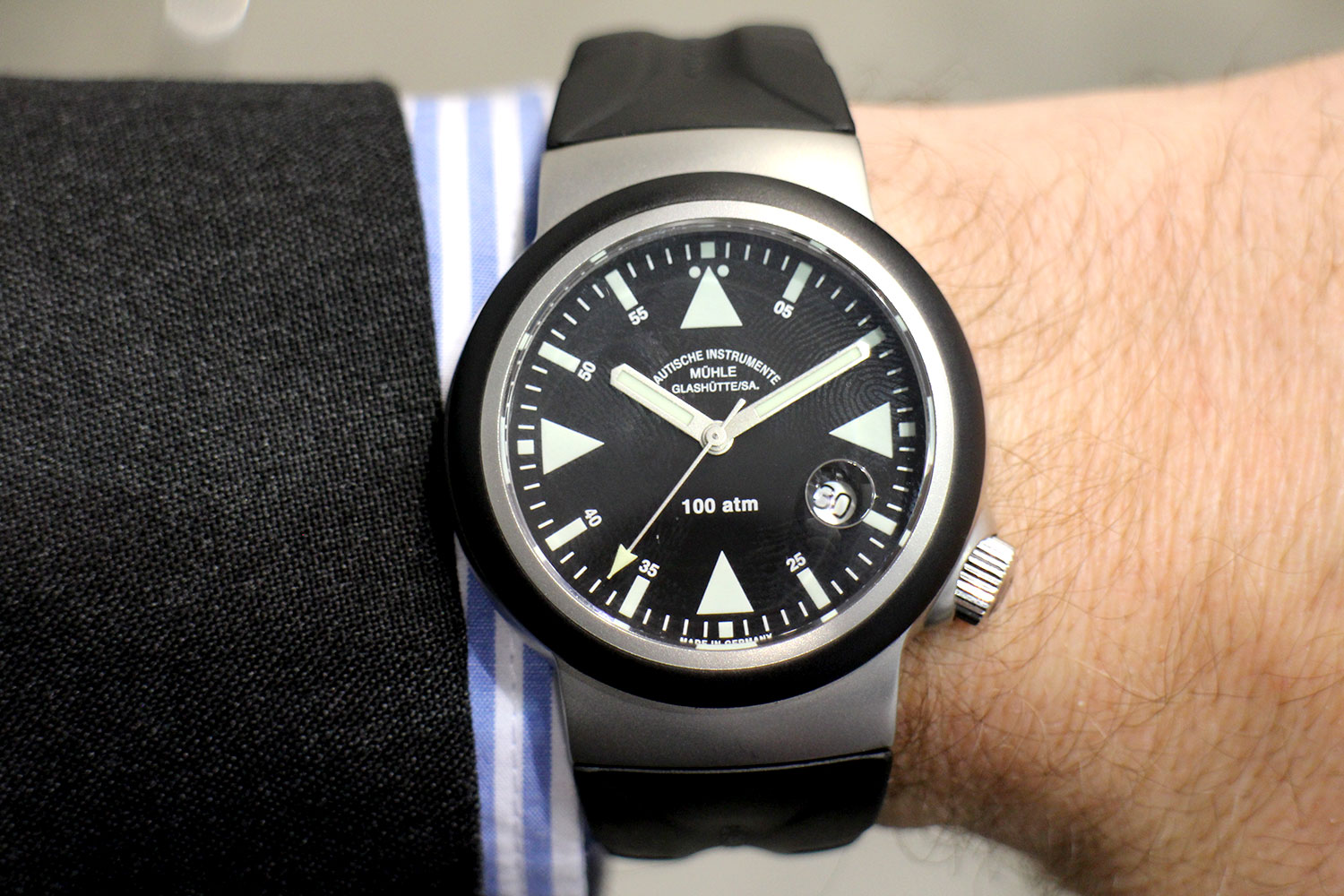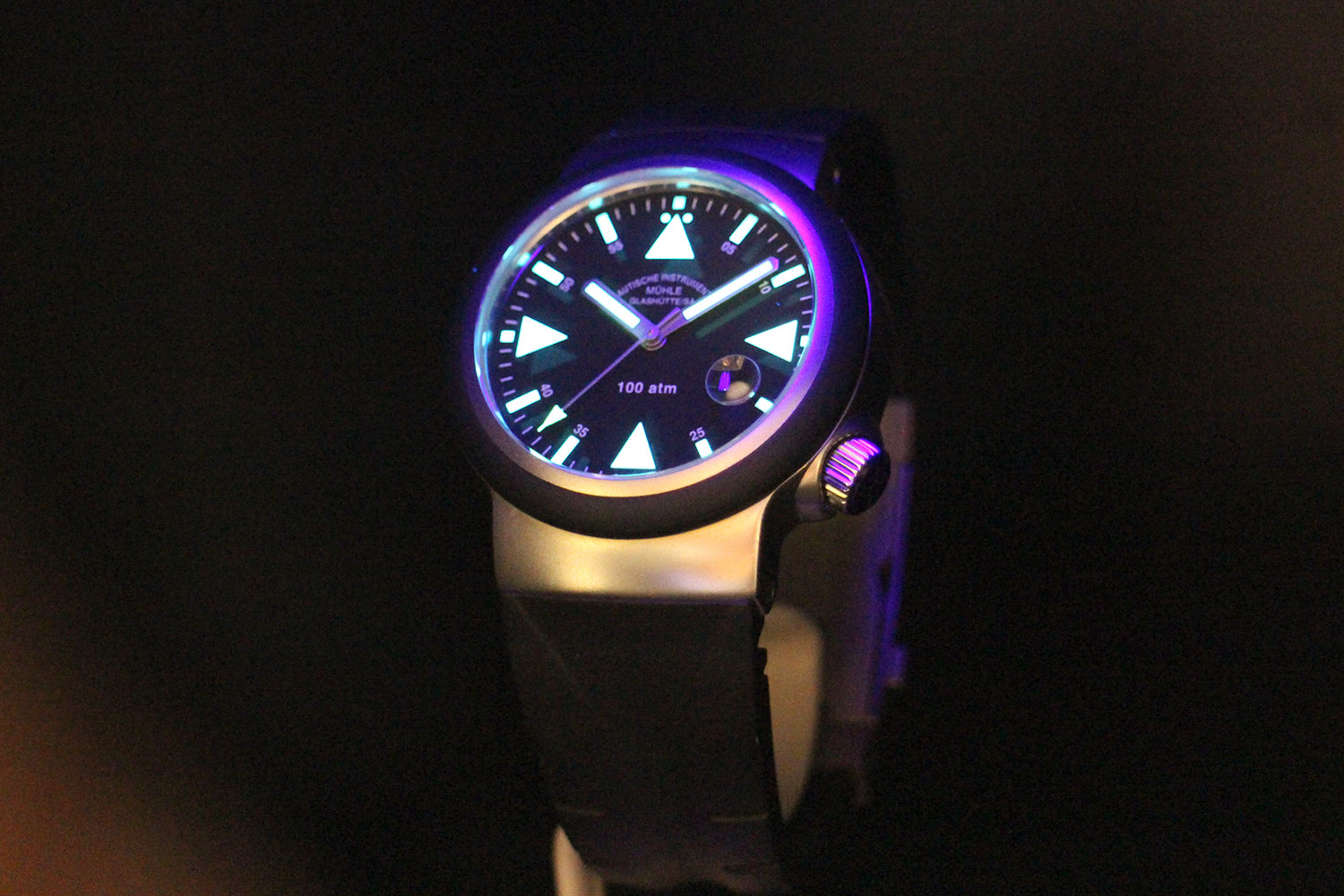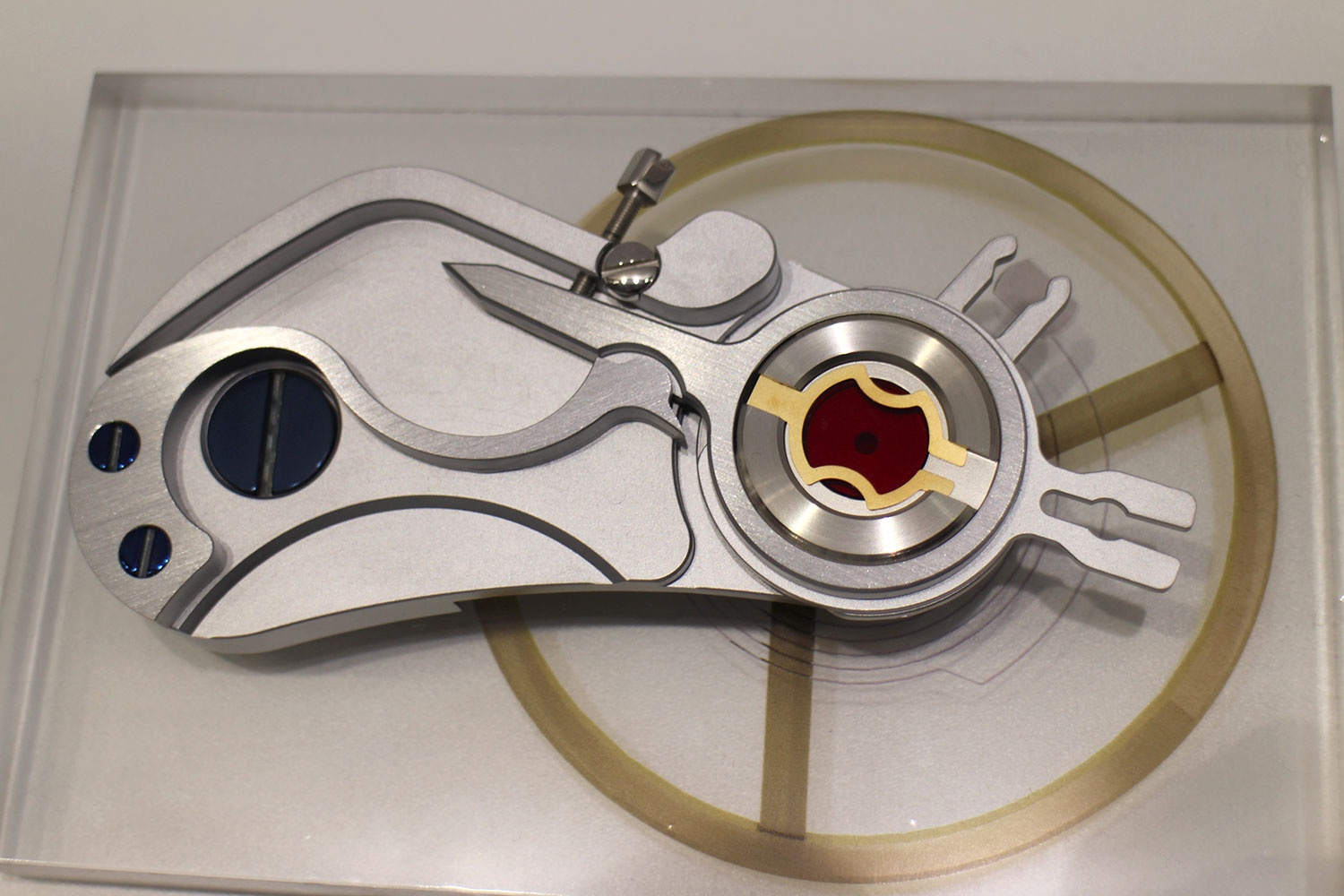Not all technically interesting watches have a touchscreen or smart features. This is the Mühle S.A.R. Rescue Timer, and it caught our eye at Baselworld 2018 because it was displayed in a blacked-out cabinet. How did we see it? The box used special lighting to simulate darkness and show off the incredible luminescent hands and numbers on the watch. We actually mistook it for an LCD screen at first, since it was so bright. Why is it like this? It’s because the watch is explicitly made for the German Maritime Search and Rescue Services, brave people saving lives in threatening conditions.
Mühle has only been making watches since 1996, but the brand has been in the precision instrument business since 1869, supplying everything from maritime measurement devices to clocks and instruments for cars. In 2002, it was charged with producing watches for the Search and Rescue Service, resulting in the first 56 S.A.R. Rescue Timers. The company got the design exactly right immediately and has only made minor changes over the resulting years, meaning the watch looks almost identical today as it did then.
Functional design
Working watches like the S.A.R Rescue Timer aren’t styled based on looks alone — the shape and design is functional. For example, the rescue team told the engineers the watch couldn’t have sharp edges, in case it caused injury to people being pulled from the sea. Check out the rounded and curved case, which even extends down the metal and rubber strap too. Beyond the shape, the watch also needs to continue to work in the harshest conditions.
We actually mistook it for an LCD screen at first, it was so bright.
The stainless steel body has a rubber bezel to protect it, it’s water resistant to 100ATM, and there’s sapphire crystal over the face. It’s not a thin sliver of sapphire either — it is 4mm thick on the S.A.R. Rescue Minus Timer. The crown is located at 4 o’clock on the body, which not only stops it digging into the hands of the wearer, but also lessens the likelihood of it scratching anyone else. Even the strap has been engineered to break away without losing any parts.
Then there is the luminous coating applied to the hands and hour markers. It’s a commonly-used coating called Super Luminova, but it’s applied to a far larger area than on most other watches. It’s hand painted over white hands and markers to increase visibility further. The brightness is important because on boats, lights are often turned out to help the team spot survivors in the water more easily. Seeing the time when everything around them is black is incredibly important, and the watch will illuminate for around 5 hours after 8 to 10 hours charging.
Accurate time
Seeing the time would be pointless if it was the wrong time. Mühle uses its own specially-designed component it calls the, “woodpecker neck fine regulator,” (named because if you look at the picture, it looks like a woodpecker’s head and beak) which is part of the automatic movement and keeps accurate time even after a severe shock — the rescue team describe hitting the watch against railings, fire extinguishers, and other solid parts of the boat. This is evidence alone of the rough treatment these watches endure.
Mühle services the watches regularly, repairing any damage sustained, which also gives it the chance to refine the design and components if needed. So far, it hasn’t, which is impressive given the amount of time the watch has been in service. There’s something really fascinating about a watch designed and engineered for a specific purpose, with super tough components squeezed into a compact body, and has needed few changes even after more than 15 years in action.
High price
Members of the German Maritime Search and Rescue Service continue to wear the watch today; but it’s not exclusive, meaning you can buy one too. If you choose the model with a rubber strap, it’s 1,790 euros ($2,215), or with the metal band, it’s 1,890 euros ($2,339). Splash out, and you can be pretty sure you won’t get even slightly close to its limits, and that’s both desirable and reassuring.
